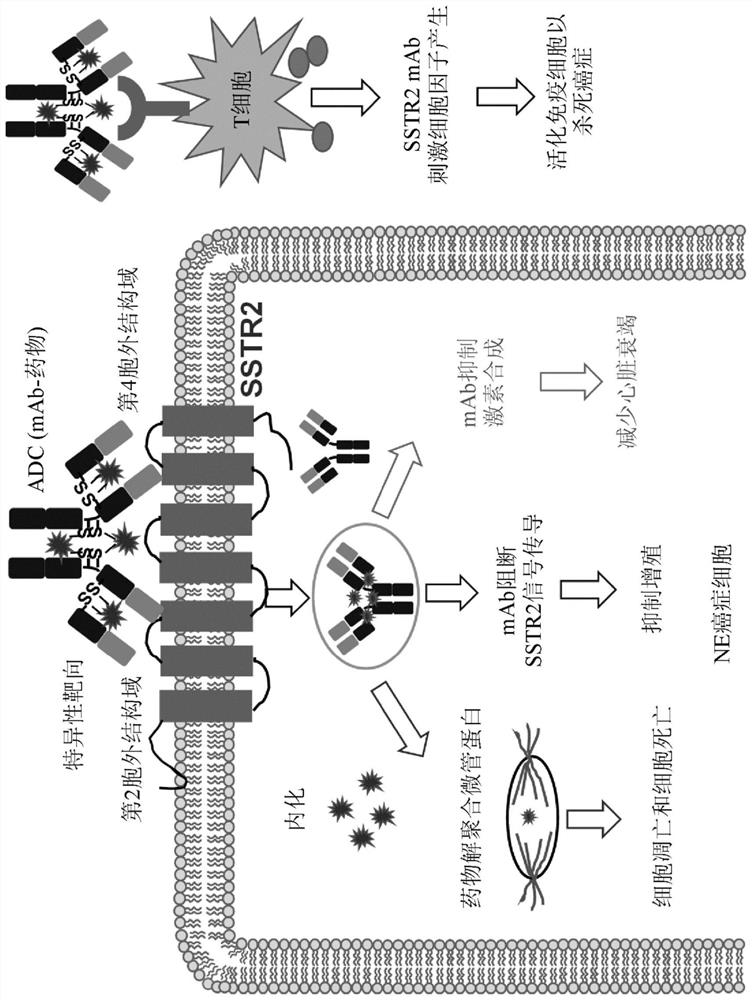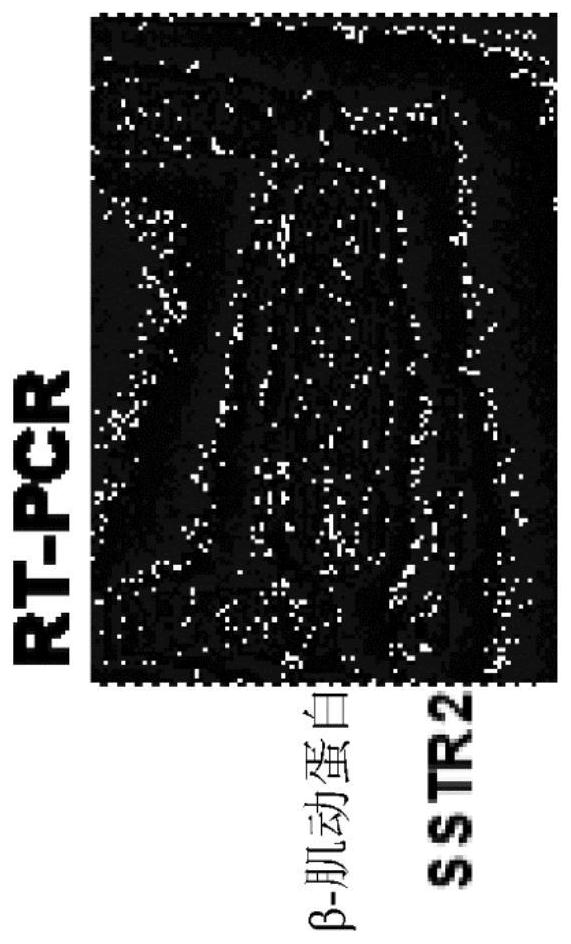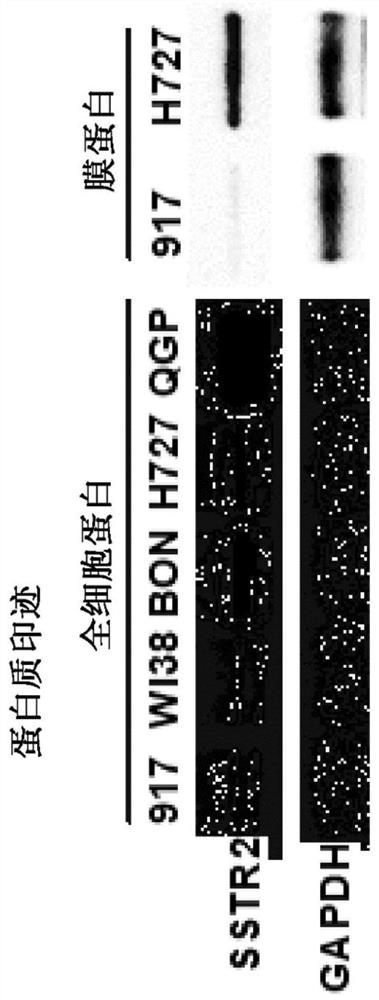Neuroendocrine cancer targeted therapy
A sequence and antibody technology, applied in the field of neuroendocrine cancer targeted therapy, can solve the problem of non-existent curative treatment of metastatic NE cancer
- Summary
- Abstract
- Description
- Claims
- Application Information
AI Technical Summary
Problems solved by technology
Method used
Image
Examples
example 1
[0146] Example 1: Overall Design
[0147] Most NE cancers overexpress the somatostatin receptor (SSTR), with the SSTR2 subtype found predominantly on the cell surface in 70-100% of NE tumors (Pinchot SN et al., Oncologist 2008 13(12):1255- 6; Zatelli MC et al., J Clin Endocrinol Metab. 200186(5):2161-9; SunLC et al., Curr Drug Deliv. 20118(1):2-10 ). More precisely, the surface expression level of SSTR2 in NETs was approximately 20-fold higher than that in normal cells (Pinchot SN et al., Oncologist 2008 13(12):1255-6; Zatelli MC et al. J Clinical Endocrinology & Metabolism 200186(5):2161-9; Sun LC et al, Current Drug Delivery 20118(1):2-10). Therefore, anti-SSTR2 monoclonal antibodies and antibody-drug conjugates (ADCs) have been developed as NE cancer-targeted therapeutics that modulate tumor progression and deliver cytotoxic agents directly to SSTR2-expressing NET cells while limiting systemic Sexual toxicity ( figure 1 ).
[0148] Targeted therapies such as monoclonal...
example 2
[0152] Example 2: Generation of antibody drug conjugates (ADCs) specifically targeting NETs.
[0153] Surface receptor recognition and assessment: Quantification of SSTR2 at the transcriptional level detected higher SSTR2 expression in pancreatic NET (PanNET) cells (BON) than in non-cancerous cells (WI38 fibroblasts) ( Figure 2A ). Additionally, Western blot analysis of PanNETs (BON and QGP), lung NETs (H727) and non-cancer cells (917 and WI38 fibroblasts) confirmed high SSTR2 expression in NE cancers but little expression in non-cancer cells ( Figure 2B ). Using confocal laser scanning microscopy (CLSM) and high-affinity polyclonal antibodies, we determined the strong membrane positivity of SSTR2 in BON cells, BON xenografts, and PanNET human tissues ( Figure 2C ).
[0154]Anti-SSTR2 mAb Development: There are no commercially available anti-SSTR2 mAbs that target surface SSTR2 for therapeutic purposes. To achieve high-affinity and specific binding to NET cells, we used...
example 3
[0157] Example 3: In vitro assessment of ADC anti-NET toxicity and mechanisms.
[0158] Evaluation of NET-specific targeting and anti-NET properties of mAbs: In vivo imaging system (IVIS) confirms that AF488-labeled anti-SSTR2 mAb specifically targets NET subcutaneous xenografts derived from BON-Luc cells ( Figure 3A ). Flow cytometry analysis showed that the mAb had very strong surface binding (99.7%) to BON cells ( Figure 3B ). Therefore, our novel anti-SSTR2 mAb has great potential as a drug delivery vehicle in the form of ADC. Western blot showed that the mAb downregulated PI3K / AKT (cell proliferation), cyclin D1 (oncogene), and p21 (cell cycle arrest), and significantly decreased the expression of CgA and ASCL1 (NET markers) ( Figure 4A ). Using flow cytometry, we analyzed the effect of our SSTR2 mAbs on the expression of cytokines in CD3 / CD28 stimulated human CD8+ T cells after 2 days of incubation with the mAbs. Such as Figure 4B As shown, SSTR2 mAb increased ...
PUM
| Property | Measurement | Unit |
|---|---|---|
| molecular weight | aaaaa | aaaaa |
Abstract
Description
Claims
Application Information
 Login to View More
Login to View More - R&D
- Intellectual Property
- Life Sciences
- Materials
- Tech Scout
- Unparalleled Data Quality
- Higher Quality Content
- 60% Fewer Hallucinations
Browse by: Latest US Patents, China's latest patents, Technical Efficacy Thesaurus, Application Domain, Technology Topic, Popular Technical Reports.
© 2025 PatSnap. All rights reserved.Legal|Privacy policy|Modern Slavery Act Transparency Statement|Sitemap|About US| Contact US: help@patsnap.com



